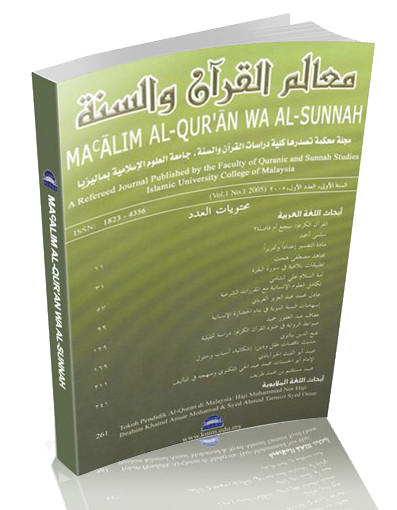Metodologi Abu Hatim Al-Raziy dalam Mengkritik Perawi Hadis: Analisis Terhadap Frasa: Laysa Bidzak Al-Qawiy
DOI:
https://doi.org/10.33102/jmqs.v10i11.84Abstract
Abu Hatim Muhammad ibn Idris al-Raziy (266h) is a leading figure in the science of hadith among the first generation (al-mutaqaddimun) especially in the al-Jarh and al-Ta'dil discipline. He made a lot of assessment and criticism on the narrators via different words and ways. The interpretation of his criticism sometimes is ambiguous, and sometimes supplemented by a clear statement and proof. This ambiguity usually happened in his assessment because of the complexity of the utterance-words, multiple uses of the structure, inconsistencies and sometimes because of the existence of contradictions. This matter may lead to confusion and misunderstanding among researchers of narrators or hadith. One of the utterances were: "Laysa bidzak al-qawiy" meaning: Not so strong. This phrase literally means the narrator is not so weak that will drop it to the level of da'if or matruk, even it seems like a mild criticism that carries higher value than: "Laysa bilqawiy" or "Laysa biqawiy" who denies the credibility of a narrator or denies it totally. However, based on preliminary observations of the author on the application of Abu Hatim when interacting with the phrase, he was seen as literally defying its use. The author also found no studies that reveal the following fundamental questions: Does Abu Hatim adopt the phrase literally or his use is across the border of the apparent understanding? Does his decision in using this phrase conflicts with other hadith scholars or in line with their assessment? Is the hypothesis that he was a stern critic (mutasyaddid) true? How accurate is his assessment in applying those terms? This study aims to reveal in detail the methodology of Abu Hatim in applying the phrase: "Laysa bidzak al-qawiy" to the narrators who have been criticized by him and compare it with the assessments of other evaluators of narrators and subsequent findings by the standards of al-Jarh and al-Ta'dil. The result is very important to understand the utterance-words of Abu Hatim, which certainly have an impact on the assessment of hadith narrators, and at the same time the assessment of hadith which is the ultimate goals of al-Jarh and al-Ta'dil.
Published
How to Cite
Issue
Section
License
The copyright of this article will be vested to author(s) and granted the journal right of first publication with the work simultaneously licensed under the Creative Commons Attribution 4.0 International (CC BY 4.0) license, unless otherwise stated.
Authors are able to enter into separate, additional contractual arrangements for the non-exclusive distribution of the journal's published version of the work (e.g., post it to an institutional repository or publish it in a book), with an acknowledgement of its initial publication in this journal.
Authors are permitted and encouraged to post their work online (e.g., in institutional repositories or on their website) prior to and during the submission process, as it can lead to productive exchanges, as well as earlier and greater citation of published work.









